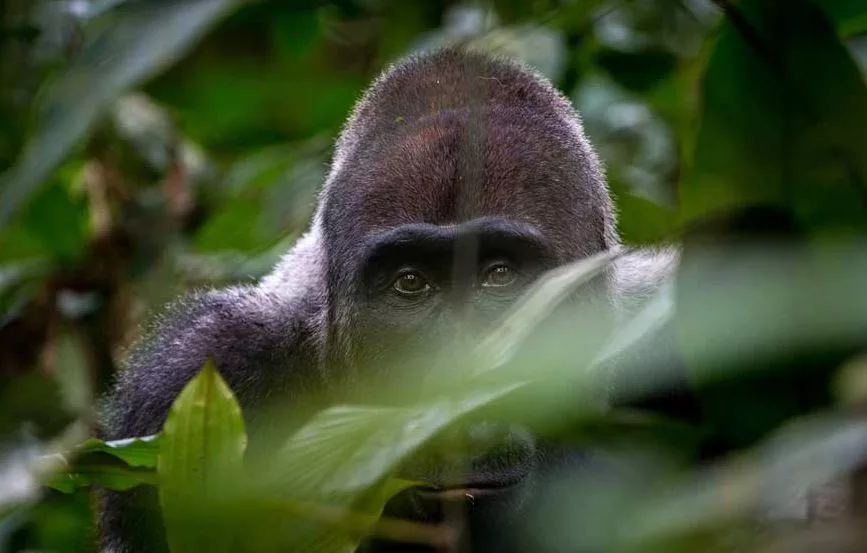Wondering what do Gorillas eat? Gorillas are mainly vegetarian animals who spend most of time peacefully eating stems, leaves, bamboo shoots, roots, and fruits.┬áThey can consume up 40 pounds (18 kilograms) per day. Gorillas donÔÇÖt eat meat, fish, or humans as some people will assume.
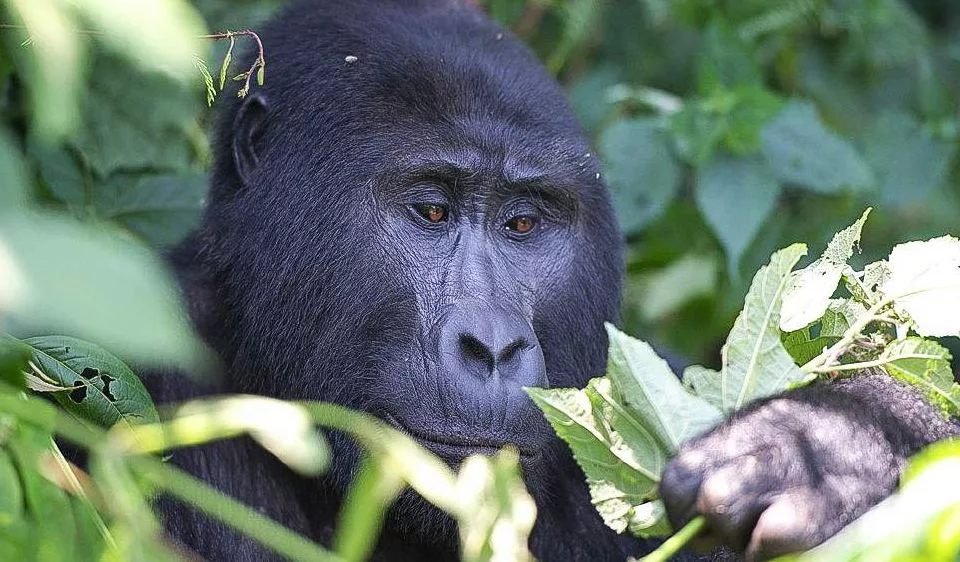
Some gorilla species, however, also have an appetite for termites and ants, and break open termite mounds to eat the larvae.
In this article, we take you through the diet for gorillas, how much they eat their feeding habits, and more.
We have dug through the research to make sure of the facts about gorilla diet.
Diet and Foraging Among Gorilla Species
The genus Gorilla is divided into 2 species: the eastern gorilla and the western gorilla and the diet for gorillas differs between and within species. Each gorilla species is divided into 2 subspecies.
The eastern gorilla is divided into the Mountain gorilla (Gorilla beringei beringei) and Eastern lowland gorilla (Gorilla beringei graueri). The western gorilla is also divided into the Western lowland gorilla (Gorilla gorilla gorilla) and Cross river gorilla (Gorilla gorilla diehli).
1. Mountain Gorilla Diet: What Do Mountain Gorillas Eat?
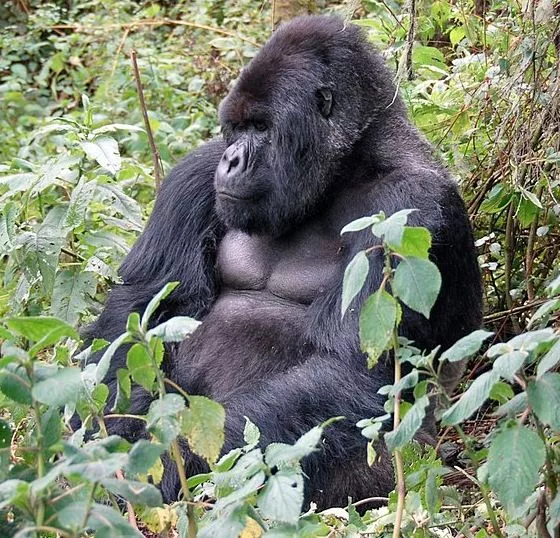
Mountain gorillas mostly eat foliage like leaves, stems (85.8%) of 142 plant species, pith, and shoots, while fruit makes up a very small part of their diets (about 1.7%).
It also feeds on bark, roots, flowers and to a small extent, some small invertebrates. The mountain gorilla is listed as endangered by the IUCN as of 2023.
There are 2 mountain gorilla populations; one is found in the volcanic Virunga Mountains of Central/East Africa, within 3 National Parks: Mgahinga Gorilla National Park in southwest Uganda; Volcanoes National Park in northwest Rwanda; and Virunga National Park in the eastern Democratic Republic of Congo.
The other population is found in Uganda’s Bwindi Impenetrable National Park. In fact, half of the world’s population lives in Bwindi. Mountain gorilla food is widely distributed and neither individuals nor groups have to compete with one another. Their home ranges vary from 3 to 15 square kilometers and their movements range around 500 meters on an average day.
2. Eastern Lowland Gorillas Diet
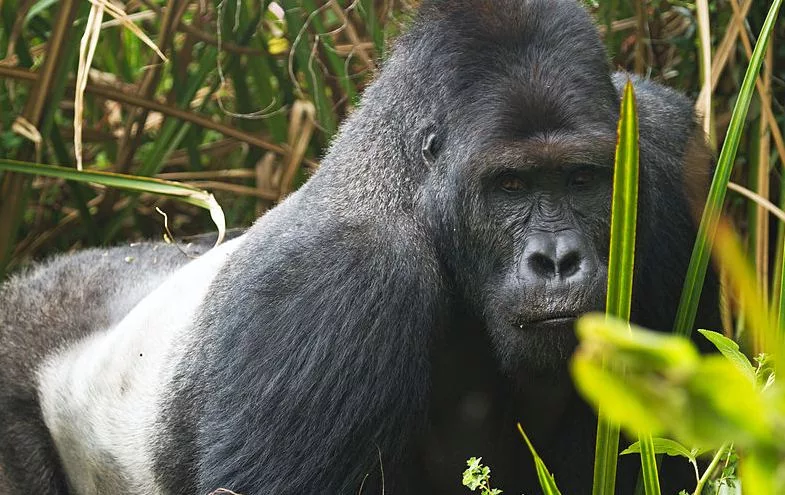
The diet of eastern lowland gorillas is more diverse diets and vary seasonally.
They commonly eat pith and leaves while fruits can make up as much as 25% of their diets.
But because fruit is less available eastern lowland gorillas must move farther each day. And their home ranges vary from 2.7 to 6.5 square kilometers , with day ranges 154 to 2,280 meters.
Eastern lowland gorillas also some eat insects, preferably ants. These gorilla are Critically Endangered and endemic to the forests of eastern Democratic Republic of the Congo.
Significant populations of this gorilla reside in the Kahuzi-Biega National Park and Maiko National Park. Eastern lowland gorilla is the largest of the 4 gorilla subspecies.
3. Western Lowland Gorillas Diet
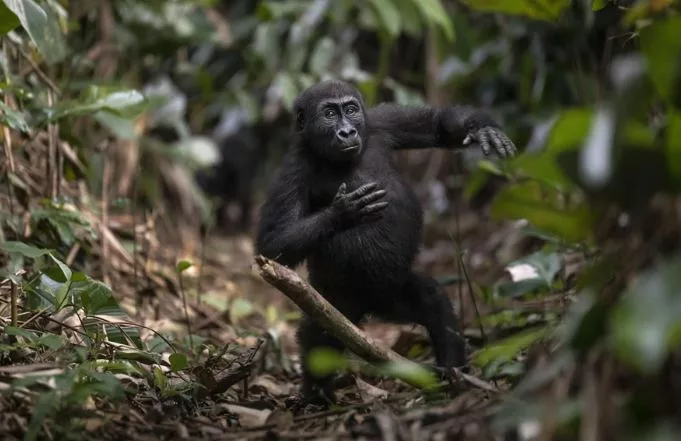
Western lowland gorillas depend on fruits more than the others gorillas.
They are more dispersed across their home range.
They travel even farther than the other gorilla subspecies, at 7ÔÇô14 square kilometers and 1,105 meters per day on average. These gorillas have less access to terrestrial herbs, although they can access aquatic herbs in some areas.
Termites and ants are also eaten. The western lowland gorillas are also Critically Endangered.
They forest and lowland swampland in central and West Africa in Cameroon, Angola, Central African Republic, Republic of the Congo, DR Congo, Gabon and Equatorial Guinea. This subspecies of the western gorilla is the smallest of the four gorilla subspecies.
It is also the only subspecies kept in zoos with the exception of Amahoro, a female eastern lowland gorilla at Antwerp Zoo, and a few mountain gorillas kept captivity in Congo (DRC).
4. Cross River Gorilla Diet
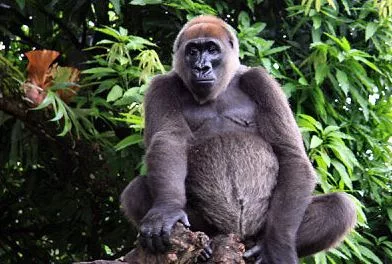
This critically endangered subspecies of the western gorilla is restricted to the forested hills and mountains of the Cameroon-Nigeria border region at the headwaters of the Cross River (Nigeria).
According the last estimates of 2014, few than 250 mature Cross River gorillas remain on earth, making them the world’s rarest great ape.
Their diet usually consists of fruit. However, in fruit scarce months of August to September and November to January, their diet is mainly made up of terrestrial herbs, and the bark and leaves of climber and trees.
What Do Baby Gorillas Eat?
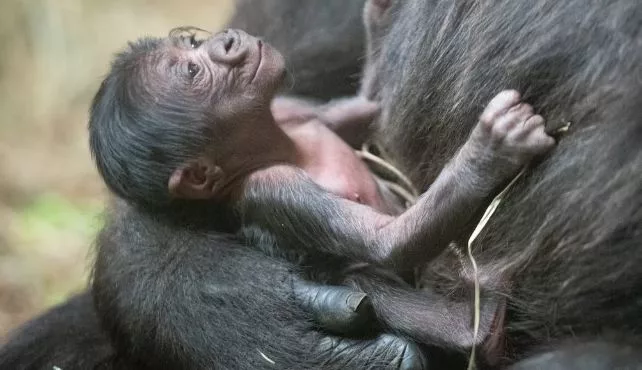
Baby gorillas rely on the milk of their mother for sustenance.
Infant Mountain gorillas and Western lowland gorillas occasionally feed on ants and other insects but in small quantity since they are full of proteins.
Young gorillas are only fully weaned at about 3 and a half years old when they can begin eating the adult diet.
Eating Habits Of Gorillas
Gorillas have great eating habits. And their day is divided between intervals of rest and feeding. In fact, gorillas don’t overfeed and exhaust one patch of the forest while feeding.
They like to feed in a way that permits plants to quickly recover. For those plants whose leaves, shoots, and stems are consumed by gorillas, a gorilla will only consume one of the parts and move on to another plant for a different part.
This is how gorillas do it, and this is how they intelligently conserve their own food sources.
How Much Do Gorillas Eat A Day?
Due to its size and strength, it is fair to wonder how much a gorilla eats daily. Adult male gorillas eat an average of 30 kilograms of vegetation every day And female gorillas eat around 18 to 20kg a day.
Do Gorillas Drink Water?
Gorillas rarely drink water. This is because they consume succulent vegetation (fresh leaves, bamboo shoots, and fruits) that is comprised of almost half water as well as morning dew.
This is why when you are trekking gorillas in Uganda or Rwanda, youÔÇÖll most likely not witness them drinking water for the one hour you will spend with them. However, both mountain and lowland gorillas have been observed drinking some water, when they are near a stream.
Do Gorillas Eat Bananas Fruits?
You might have seen gorillas and other primates eating banana fruits at the zoo or in movies, wild gorillas do not eat banana fruits.
The forested homes of gorillas are very dense with trees that do not allow the bananas to grow. Therefore most gorillas in the wild live their whole lives without ever having eaten a banana.
But when the local population is near the gorilla national park, a gorilla might move out to the community and end up destroying banana trees to feed on the nutritious pith and regarded as Human-Wildlife Conflict. Also it is illegal to take food, in this case, bananas to animals in the national park and this is why wild gorillas have probably never tasted a banana.
Do Gorillas Eat Meat or Fish?
Science fully agrees that gorillas are omnivores. This is because they occasionally eat insects such as termites. However, gorillas do not eat meat and fish. Their long canine teeth and incredible bite force is for chopping down on some veggies – and a bit of fighting to protect themselves.
According to some research, the DNA of duikers and some monkeys was found in some gorilla’s faeces. While the faeces could have been contaminated, the possibility of meat consumption was not fully dismissed since the digestive system of a gorilla is capable of digesting meat.
But, there is no enough data to support any of these theories and the research continues. You can check out this journal article and follow the research.
What Are Some Plants That Make Up The Diet For Gorillas?
The diet for gorillas consists of over 140 species of plants. These plant species occur naturally in their forest jungle habitat. Some of these are slightly more common than others.
What Do Gorillas Eat In The Zoo?
In captivity, gorillas are given a balanced diet of leaves, stems, shoots, fruits, ants, termites, and primate biscuits with high fiber content. The leafy vegetable comprises at least 60 percent of the overall dish, with the additional components accounting for the remaining 40 percent.
The health and food of the gorillas at the zoo are regularly checked and altered according to the gorilla’s health condition. Other gorilla species have been able to thrive in zoo environments, but efforts to do so with mountain gorillas have failed. As a result, all mountain gorillas in the world continue to live in their native wild forest habitat.
Final Thoughts On What Do Gorillas Eat
We hope that by now your questions about the diet for gorillas are fully answered. We have to mention that while learning about gorillas facts is so much fun (and you should keep doing it), seeing them is a real treat. If you can get a chance to see these rare and magnificent creatures in the wild, you should definitely do it. It is one of the dazzling wildlife encounters you might experience in Africa. 
At Tulambule we offer several Uganda gorilla safaris and Rwanda gorilla trekking tours. Contact us today to tailor your safari at a great price.

